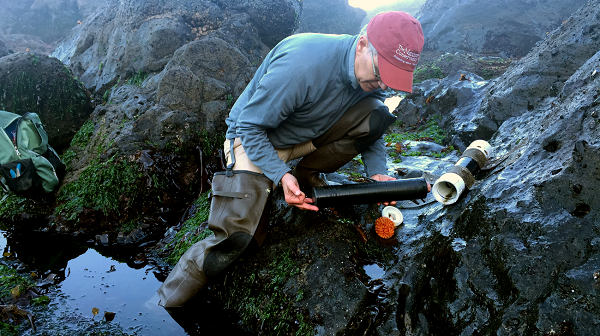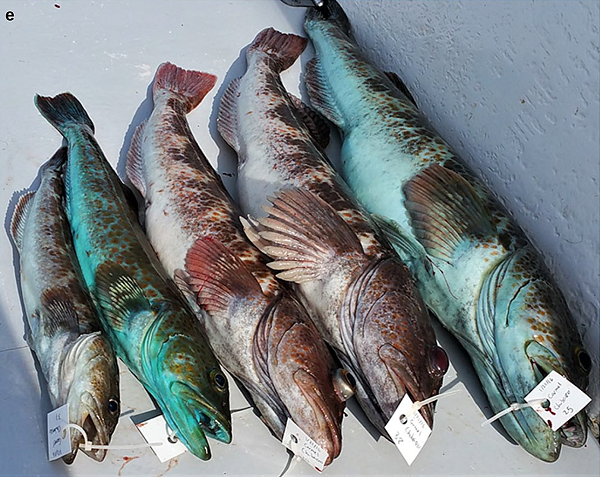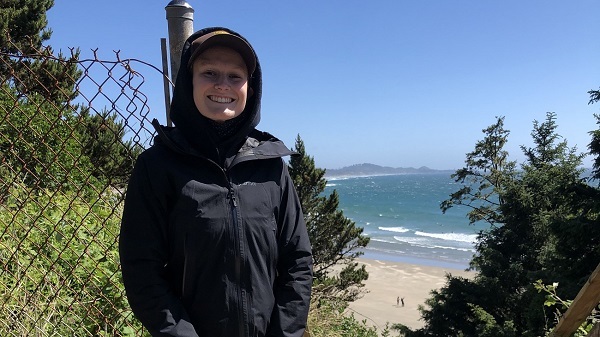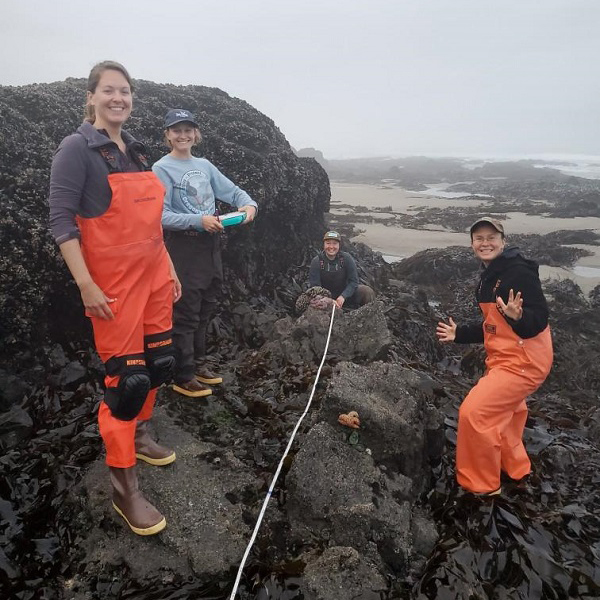Marine Reserves News: One fish, two fish, red fish, blue … lingcod?
ODFW sent this bulletin at 08/26/2021 07:30 AM PDT
Photo by Laurel Lam: Examples of the range of 'blue' and 'brown' color variants in lingcod as provided in a new paper by Galloway et al. (2021). Ever come across a blue lingcod while fishing or SCUBA diving? Blue-colored flesh in fishes is relatively rare but occasionally seen in some sculpins, perch, and greenlings including lingcod. A recent paper by Aaron Galloway, at the Oregon Institute of Marine Biology, and collaborators describes research looking at biological and spatial factors that could explain variation in blue coloration of lingcod (Ophiodon elongatus). The researchers sampled 2,021 fish across their range, from southeast Alaska to southern California. The samples from southern Oregon were collected in the Redfish Rocks Marine Reserve and Humbug Comparison Area, by the ODFW Marine Reserves Program, during our hook-and-line and longline surveys. Our former team member, Jessica Watson, is one of the paper’s contributing authors. Findings Some of the findings by the researchers were that the probability of having blue flesh was highest for fish that were female, caught in shallower water, and smaller in body size. Occurrences of blueness varied by region (4–25% of all fish) but was also confounded by differences in sex ratios of fish caught among regions. Fatty acid concentrations were lower in blue fish suggesting differences in energetics and energy storage in blue vs. brown fish. The researchers noted that though their data reveal potential links between diet and blue flesh in lingcod, questions remain about the physiological mechanisms around blueness and its biological consequences. Read the Paper to Learn More Galloway, Aaron W. E., Beaudreau, A.H., Thomas, M.D., Basnett, B.L., Lam, L.S., Hamilton, S.L., Andrews, K.S., Schram, J.B., Watson, J., Samhouri, J.F. Assessing prevalence and correlates of blue colored flesh in lingcod (Ophiodon elongatus) across their geographic range. Marine Biology (2021) 168:139 https://doi.org/10.1007/s00227-021-03936-6  
|
Oceanographic Monitoring: Moorings that have been collecting data all summer at Otter Rock, Cascade Head, and Cape Falcon will be retrieved next month. These will tell us trends in temperature, salinity, and oxygen across our central and north coast reserves. |
Sea Star Surveys: We conducted intertidal sea star monitoring at Cascade Head with the help of some eager volunteers. Despite some challenging low tides, we identified over 200 stars across a range of sizes and very few signs of sea star wasting disease. |
Summer Student Interns: We hosted two Oregon Sea Grant Summer Scholars and a Doris Duke Conservation Scholar for 10 weeks this summer. These interns helped our team in conducting human dimensions research. |
Business, Visitor and Recreational Fisher Surveys: To check on current perceptions of Oregon’s marine reserves, out summer interns conducted surveys of local business owners and coastal visitors at several of the reserves. They contacted over 340 area businesses and interviewed 1,482 visitors at the reserves. We also conducted a statewide survey of recreational fishing license holders and received 7,759 responses. We’re excited to see the results from these new studies and will compare these results to our earlier studies to see if awareness and perceptions of the marine reserves have changed over time since they were first implemented over a decade ago. |
Collaborator Updates
Juvenile Fish Surveys: Our OSU collaborators, with help from the Oregon Coast Aquarium, continued to collect juvenile fish samples at Otter Rock Marine Reserve and Cape Foulweather Comparison Area this month. After a huge pulse in the QGBC rockfish complex (Quillback/Gopher/Black-and-Yellow/Copper/China Rockfish) last month, the pulse seems to have subsided. The team plans on wrapping-up their field season at the end of the month, with the final collection of fish samples and retrieval of all eight moorings. |
Explore More Marine Reserves News


OREGONMARINERESERVES.COM
Oregon Department of Fish and Wildlife
2040 SE Marine Science Dr. Newport, OR 97365 (541) 867-4741





